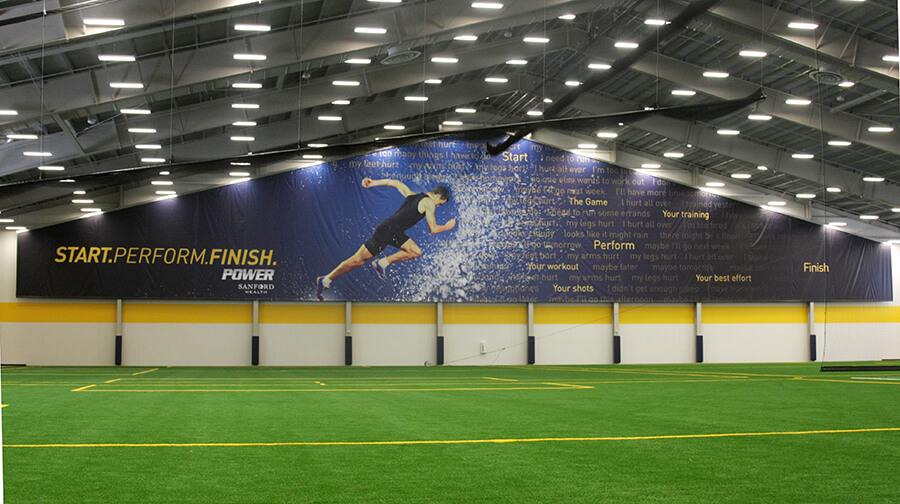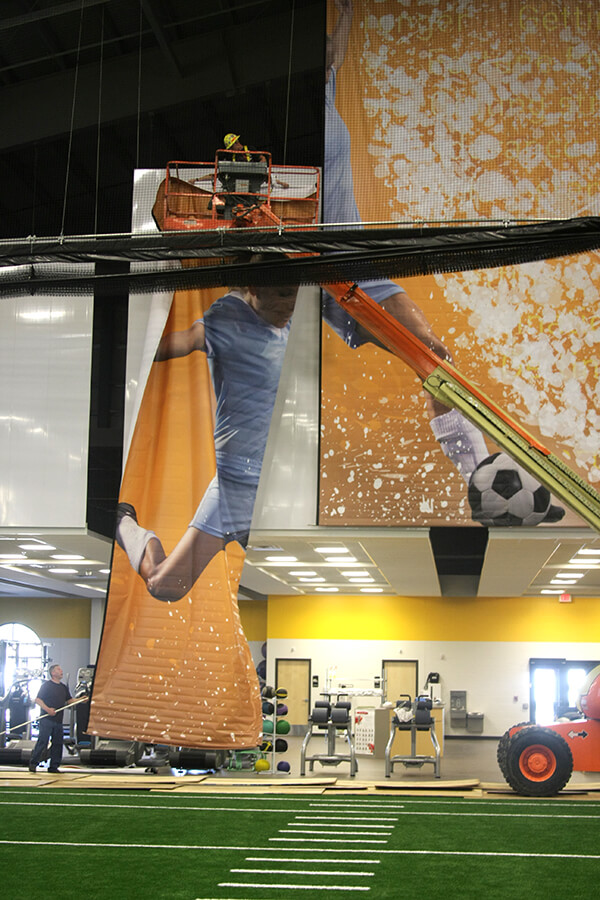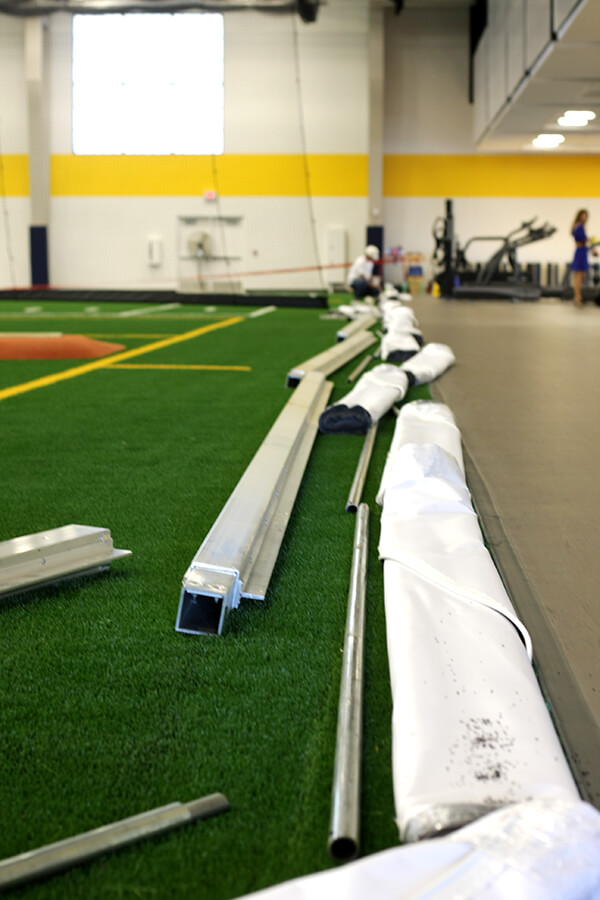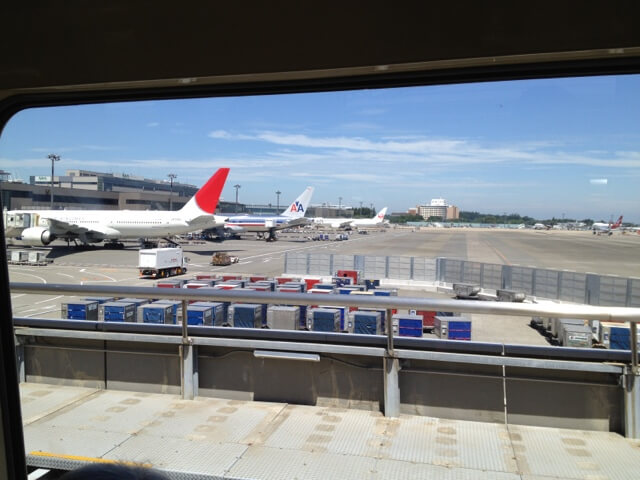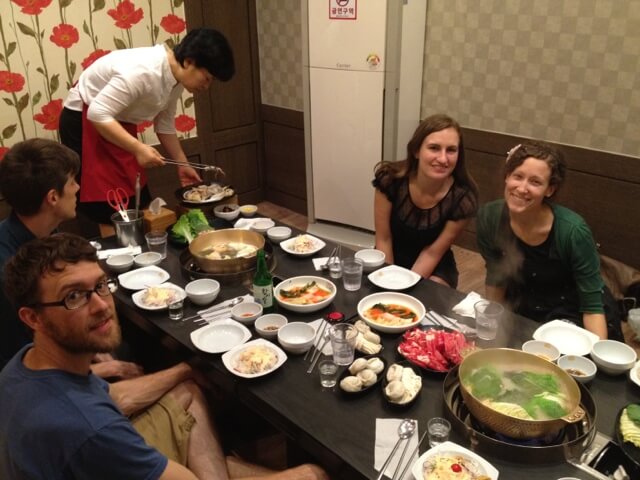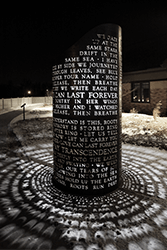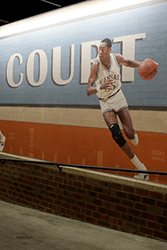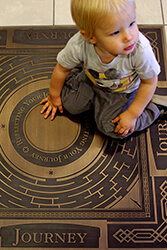Sanford Fieldhouse Mural
Tuesday, September 18th, 2012
The new Sanford Fieldhouse will officially open later this week. According to the Sioux Falls Business Journal article,
The 85,000-square-foot building will support local, regional and national athletic training, co-ed sports leagues and Sanford’s Power programs. The Fieldhouse will offer athletic performance development; comprehensive functional, physiological and biomechanical evaluations; and rehabilitation and nutritional consultation services.
It is also home to two large-scale murals that we designed. These photographs, taken during the murals’ installation, give a sense of the scale. The photo on the left shows the frame the murals hang from, and the rolled sections of our soccer player mural.
Each Sanford Fieldhouse mural shows an athlete in training, the athletes pushing through a thick cloud of excuses not to train. Our designs, shown below, were printed and installed by Heritage Art, Ltd.

